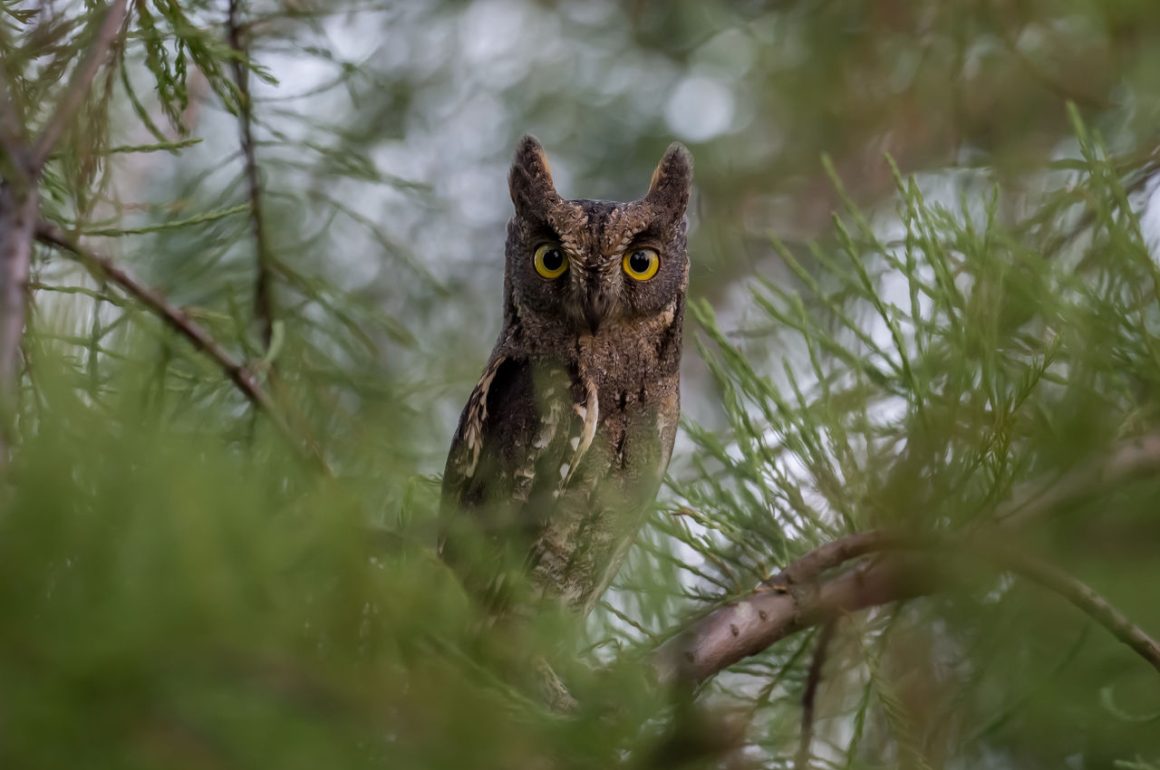
Note: This is a collaborative post utilizing the collective experience, brainpower, and enthusiasm of several 10,000 Birds writers to illustrate and showcase the magnificent bird family that is the Scops Owl, hopefully supporting a paradigm shift that will further enhance the reputation of Otus among ornithologists and birdwatchers alike. And no, this sentence was not written by ChatGPT, even though it sounds like it was.
***
There are 56 species of Otus Scops Owls, and they are all wonderful – and that is a strictly scientific statement. This post covers twelve of them – though hopefully among us, we can add many more in the future.
***
My encounter with the São Tomé Scops Owl was in Parque Natural Obô de São Tomé – and I have written about this particular trip before. We were camping and while my guide António was cooking, the scops owl was calling in the distance. António called back and for the next 40 minutes, the inter-species duet between man and owl continued. The owl came closer but never close enough for us to spot. The next day we left camp and almost immediately saw the scops owl in a tree. Diurnal mammal spots nocturnal bird – happy times.
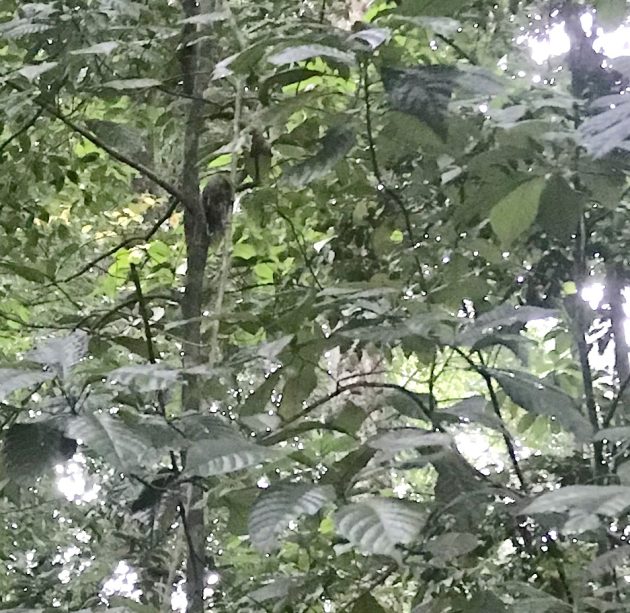
Spot the owl – it’s not easy, but my night on that soaked mountain wasn’t a picnic either! Intriguingly, my fellow SPEA board member Martim Melo described the sister species Principe Scops Owl shortly after I visited São Tomé e Principe – leaving me with a very good reason to return to the islands (Peter Penning).
Bonus Scops Owl: Principe Scops Owl as seen and photographed by Martim Melo.
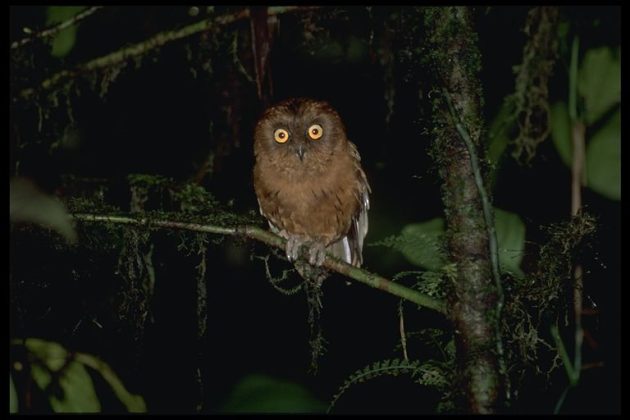
***
The fact that I can spot it in daytime during migration is one of the many reasons why I love the Oriental Scops Owl. Also, it looks a bit like a hybrid between a cartoon devil and a slightly evil cat.
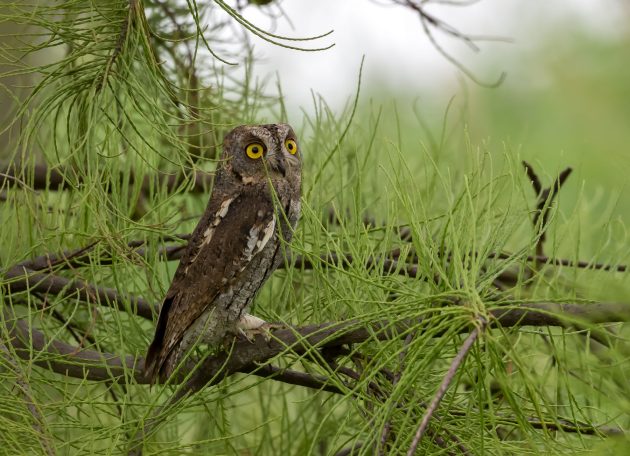
And it even comes in two different colors, greyish-brown and reddish, giving me a good reason to show not one but two photos. On the best days in the autumn migration, it is possible to see about 10 of these flying cats inside the Nanhui microforests of Shanghai (Kai Pflug).
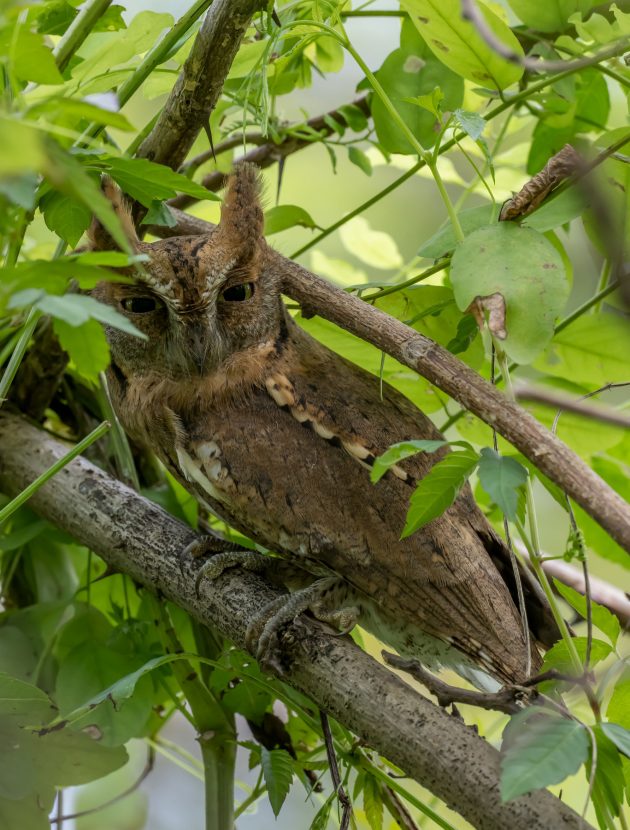
***
Another good excuse for showing two photos of the same species is if you can show a chick – here is one of a Collared Scops Owl. In Jixi, Anhui, China, the parent watched closely from nearby.
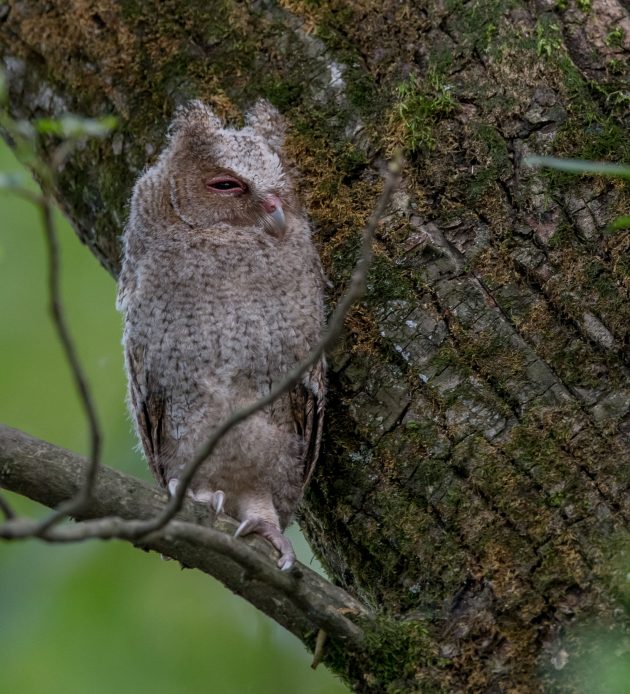
Strangely, many Chinese bird photographers walking very close by completely overlooked both owls – they had come for the white morph of a male Amur Paradise Flycatcher that was the local attraction. Now that bird may be prettier for most people, but not for me (Kai Pflug).
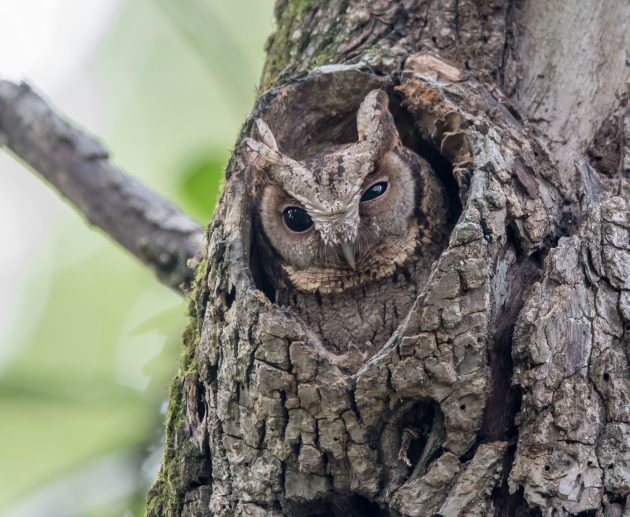
***
Cyprus Scops Owl was a classic arm-chair tick for me: it was a bird that I knew well when it was still regarded as simply an island race of the widespread European Scops Owl. It’s only relatively recently that it has been elevated to full species status. It’s a common resident throughout the island and can be heard even in the Troodos Mountains, but it’s a difficult bird to see. I have fond memories of watching birds at Agios Ermogenis, close to the Curium, where these diminutive owls live in towering eucalyptus trees.
This year I returned to Cyprus for the first time since Otus cyprius became a full species. Though a calling bird greeted me on my first night on the island, frustratingly I failed to see it, though it was only feet away. The call is diagnostic, consisting of two notes in a rigid sequence: a quiet note, followed by a short silence, then a loud note, and a long silence. It will repeat these two notes monotonously for minutes on end. If I had managed to see it, I would have seen a darker, greyer bird than O. scops, but one that is otherwise very similar. (David Tomlinson)
***
The Serendib Scops-Owl is surely part of the “Otus premium club” (which would have many members, admittedly). It was only discovered the year I was born (2001), which made me particularly eager to see it in the rainforests of Sri Lanka to which it is endemic. I’ve seen this species several times in the Sinharaja Forest – the first time with my teacher (and fellow birder) on a school field trip. Not only is this the rarest owl I’ve ever seen, but it was also one of the best Otus sightings I’ve had (Luca Feuerriegel).
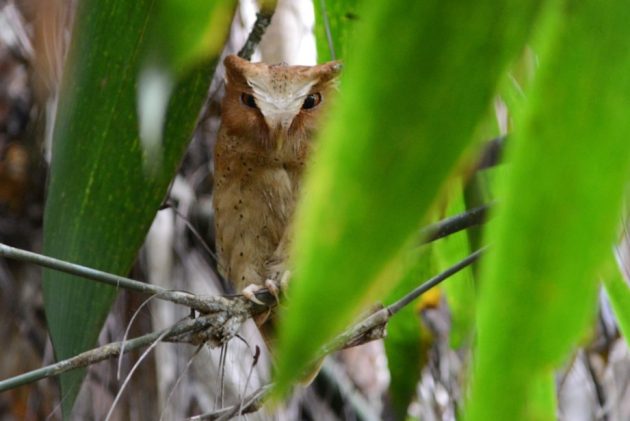
***
The Eurasian Scops-Owl is of course way more common and widespread than the other species I’ve described here, the Serendib Scops-Owl. It is therefore ironic that the sighting of it was much less expected and far worse. Not that I came across it by accident. In fact, the opposite is true as I twitched the bird in a neighborhood in Bonn, Germany. The bird was calling actively and briefly perched in an opening at the top of a housing block. I am looking forward to seeing this bird in its Mediterranean habitat and in conditions that don’t force me to crank up my camera’s ISO (Luca Feuerriegel).
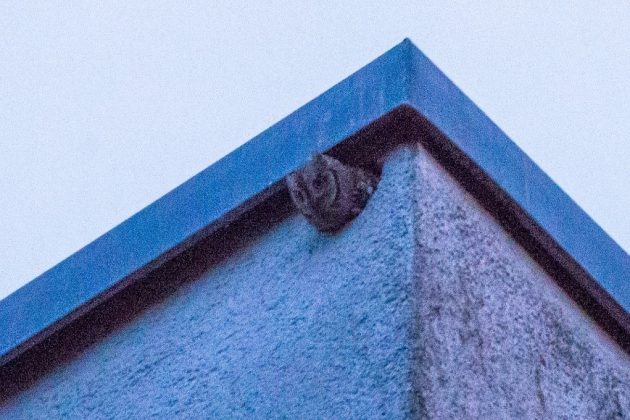
***
Of the 55 members of the genus Optus, the African Scops (Otus senegalis) has by far the biggest range, as it is widely distributed in Sub-Saharan Africa, from Senegambia across to Ethiopia and all the way south to Botswana and South Africa. It’s a bird of the savannahs rather than the rain forest, so it absent from the Congo basin.
Like the European Scops Owl (O.scops), with which it was once lumped, it’s a strictly nocturnal bird, which makes it a challenge to see. I’d heard it many times in East Africa – its distinctive frog-like calls are repeated every 5-8 seconds – but I’d often struggled to see it. My best-ever views were in Namibia, at Halali Camp in Etosha. The camp boys usually know where these diminutive owls are roosting, and in return for a modest tip will show one to you.
European Scops Owl also occurs as a wintering bird in the Sahel zone. The two are almost identical in appearance, but in the hand, senegalis has a different wing formula, its primaries slightly shorter, indicating that it’s a non-migratory African Scops Owl (David Tomlinson)
***
Arabuko-Sokoke Forest, a protected area off the east coast of Kenya, features Brachystegia woodlands and Cynometra forest. And where these trees grow, you will find the most adorable Sokoke Scops-Owl, Otus ireneae. (I know, saying “adorable” and “scops-owl” in the same sentence is repetitive.) Wikipedia says it’s the smallest of the Scops-Owls, Handbook of Birds of the World merely says that it’s small, 15-18 centimeters in length. When I visited Kenya in 2023, a local guide provided by the Wildlife Service had us wait. It was a short wait, about 20 minutes, and then he led us to an area of seemingly undisturbed, thick shrubbery. And in the middle of this shrubbery was this perfect, compactly structured, tiny, reddish creature. We quietly viewed the Sokoke Scops-Owl in small groups. Though it looks ticked off in this photo, it afterward closed its eyes and did its scops-owl thing, which was to ignore the silly humans and wait until dark, when it could get its fill of scarab beetles, crickets, and small birds. Sokoke Scops-Owl is endangered, found only in this tiny area in Kenya and similar habitat in northeast Tanzania. It’s one of several endemic creatures found in the Arabuko-Sokoke Forest (Golden-rumped Elephant Shrew, anyone?). The loggers are eyeing the forest and climate change presents its own challenges to this very specific habitat. The time to see this Scops-Owl is NOW (Donna Schulman).
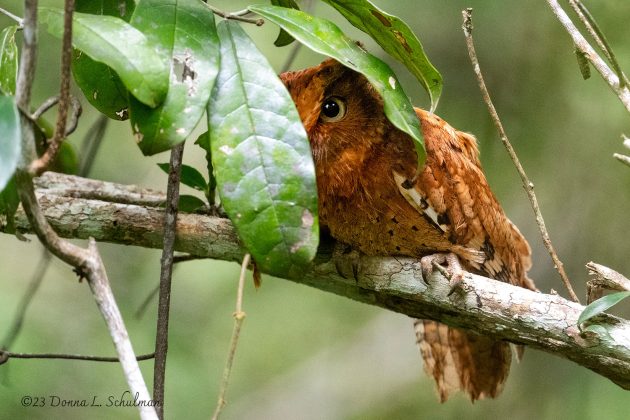
***
The Japanese Scops Owl is a rare visitor to Shanghai – I have seen it twice so far in by now probably almost 1000 visits to Nanhui, Shanghai. A look at its Cornell entry and distribution map explains why – it is non-migratory, and though it is not restricted to Japan at all, also breeding in the Koreas, parts of Russia, and Northern China, its normal range is still quite a bit north of Shanghai (Kai Pflug).
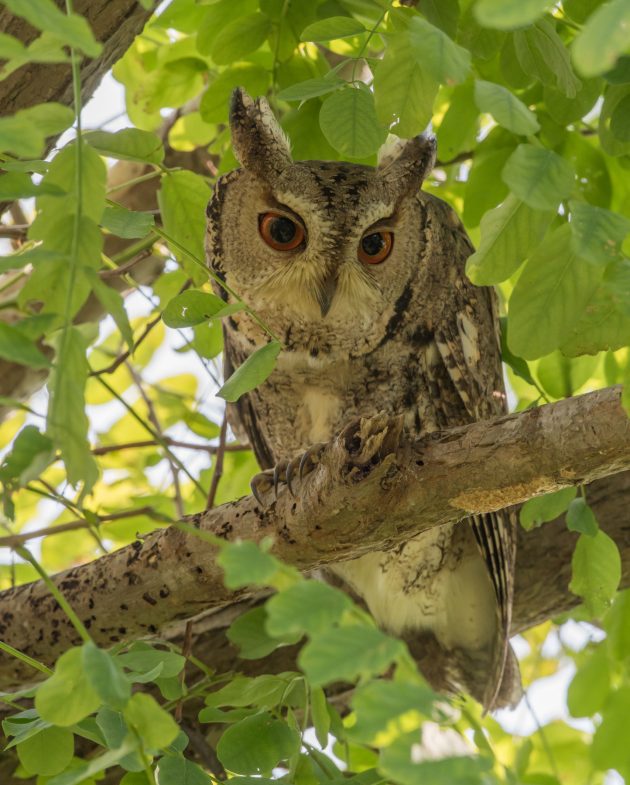
***
In contrast, the name of the Sulawesi Scops Owl is quite a bit more fitting as the species really only lives on Sulawesi and a few satellite islands. I saw this owl near Manado, a city on Sulawesi – which fit nicely with the owl’s scientific name, Otus manadensis. Admittedly, in this case, seeing the owl was a bit like getting a consolation prize – I had spent a fruitless afternoon in a blind waiting for a Sulawesi Pitta which failed to pass the basic avian courtesy rule “Birds should be seen not heard” – and for a photographer like me, just hearing a bird is almost more frustrating than not getting any sign of life at all (Kai Pflug).
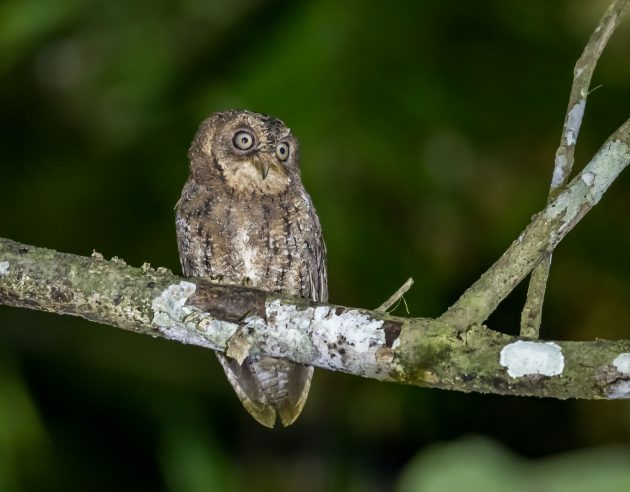
***
On the other hand, the Moluccan Scops Owl was indeed the main target of that evening after I had failed to see it the night before and was already gradually falling into the usual existential doubts about whether this species really existed. Fortunately, I can now say it does. Apparently not only on Halmahera, where I saw it, but on several major islands in the broader area as well. And as everyone knows, multiple islands mean multiple subspecies, one of which, the Wetar Scops Owl, has already been promoted to full species. Unfortunately for this species, it thus lost the rather beautiful scientific name of the Moluccan Scops Owl, Otus magicus, the Magic Scops Owl (Kai Pflug).
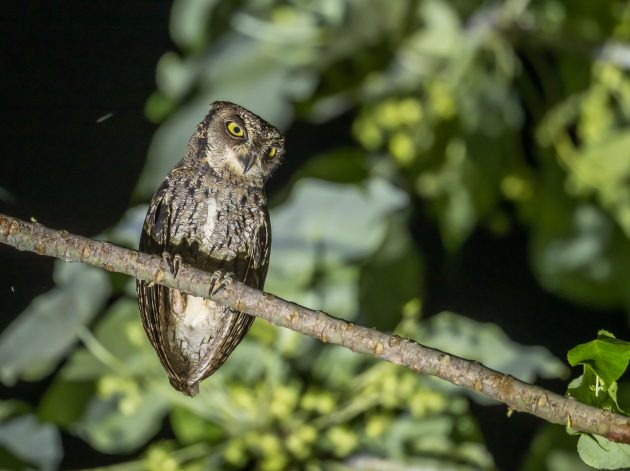
***
This post was already completed and to be published when I traveled to East Java and saw my first Sunda Scops Owl. It seems to be quite common there (I saw two within 100 meters of each other and heard a few more). Even more surprisingly, I noticed that the Cornell entry on this owl has just been updated on October 22, 2024 – these updates seem rarer than owl spottings to me. The scientific name is Otus (of course!) lempiji, which apparently is the Javanese name for the owl. Interestingly (though this is completely irrelevant information), the author of the owl entry is one Chuenchom Hansasuta, who received a Doctor of Dental Surgery from Chulalongkorn University, where I once did a presentation on one of the dental products I developed when I was still doing real chemistry rather than consulting. I did warn you that this was irrelevant information (Kai Pflug).
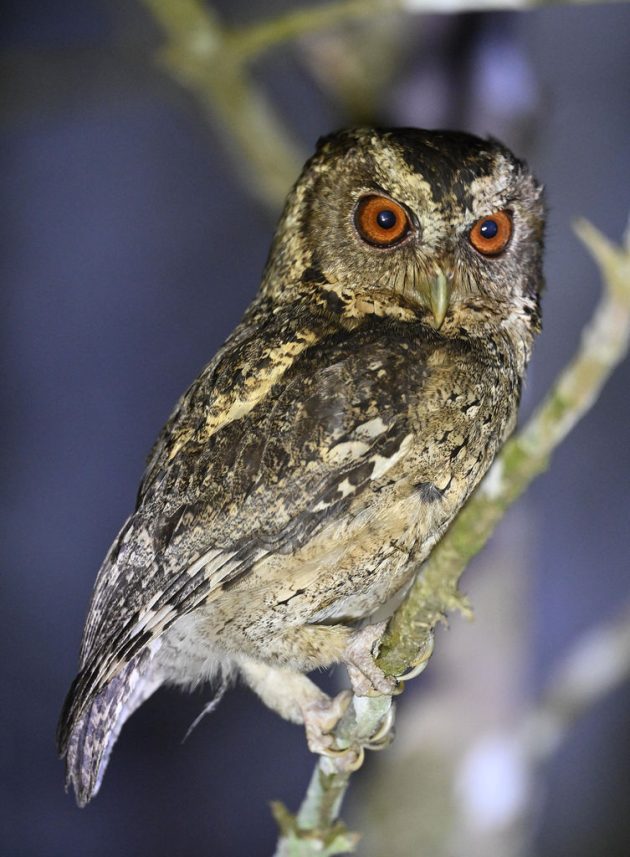
All photos by the respective authors, though Peter will probably claim he did not take his.













Curiously, when this post first appeared, I felt disenchanted because I had never seen any version of a Scops-owl, anywhere.
A day and a half later, while visiting a nearby mid-sized city, I awoke unintentionally at 4 AM. Unable to return to sleep, I soon noticed a distinctly owl-like call coming from somewhere outside. Playing the recordings on eBird of all of the likely possibilities, I came to the conclusion that it was Madagascar Scops-owl! Since I had to leave in 90 minutes anyway, why not go out and try to find where it was roosting, I thought…
It was a quite frustrating experience at first. My impression was that the call was coming from perhaps 100 meters, or so, away. But whichever direction I moved, the sound seemed to be coming from the opposite, complicated by the fact that it was often being reflected off of nearby buildings. After about 45 minutes of futility, I came to the surprising conclusion that the bird had been in a tree immediately behind my bungalow all along. While standing beneath that tree for a moment, dawn was starting to take hold, and I soon witnessed an appropriate-sized bird fly off, after which the calling ceased. An odd way to pick up a life bird, but at least I can read this post again without feeling like an outsider. 🙂
It is kind of the overarching mission of 10,000 Birds to make readers feel their inadequacy as birders. So, your post is a disappointment for us writers.